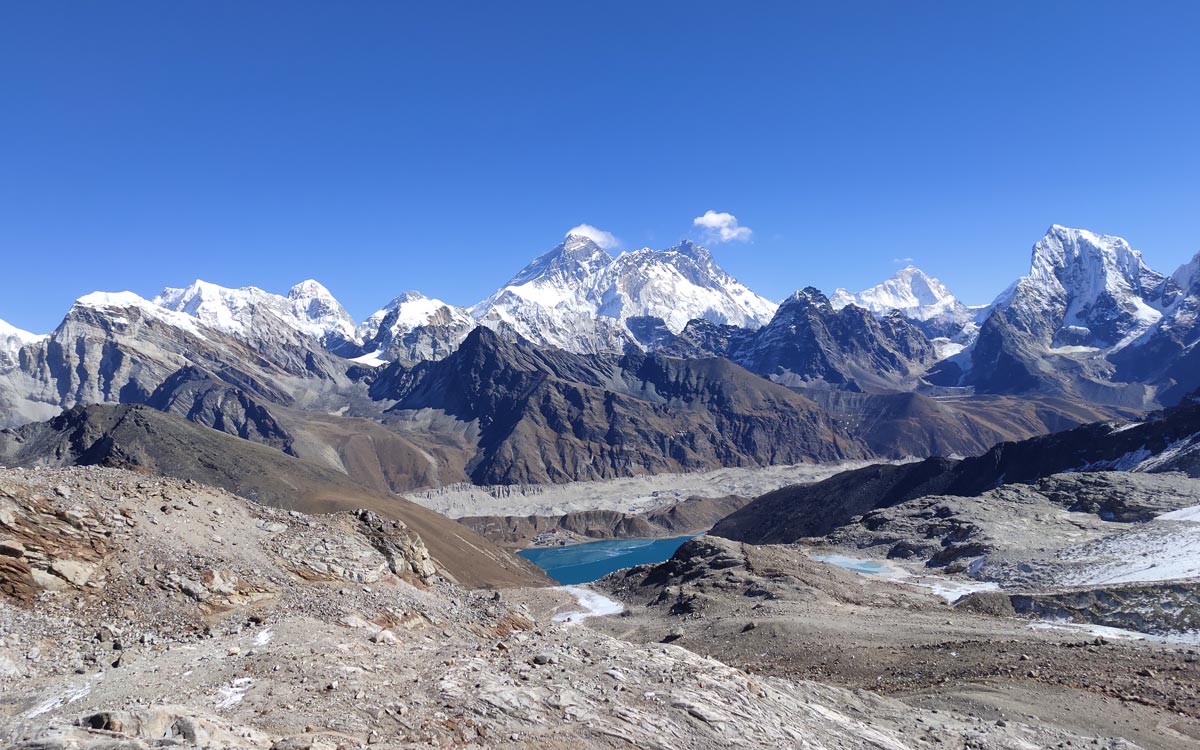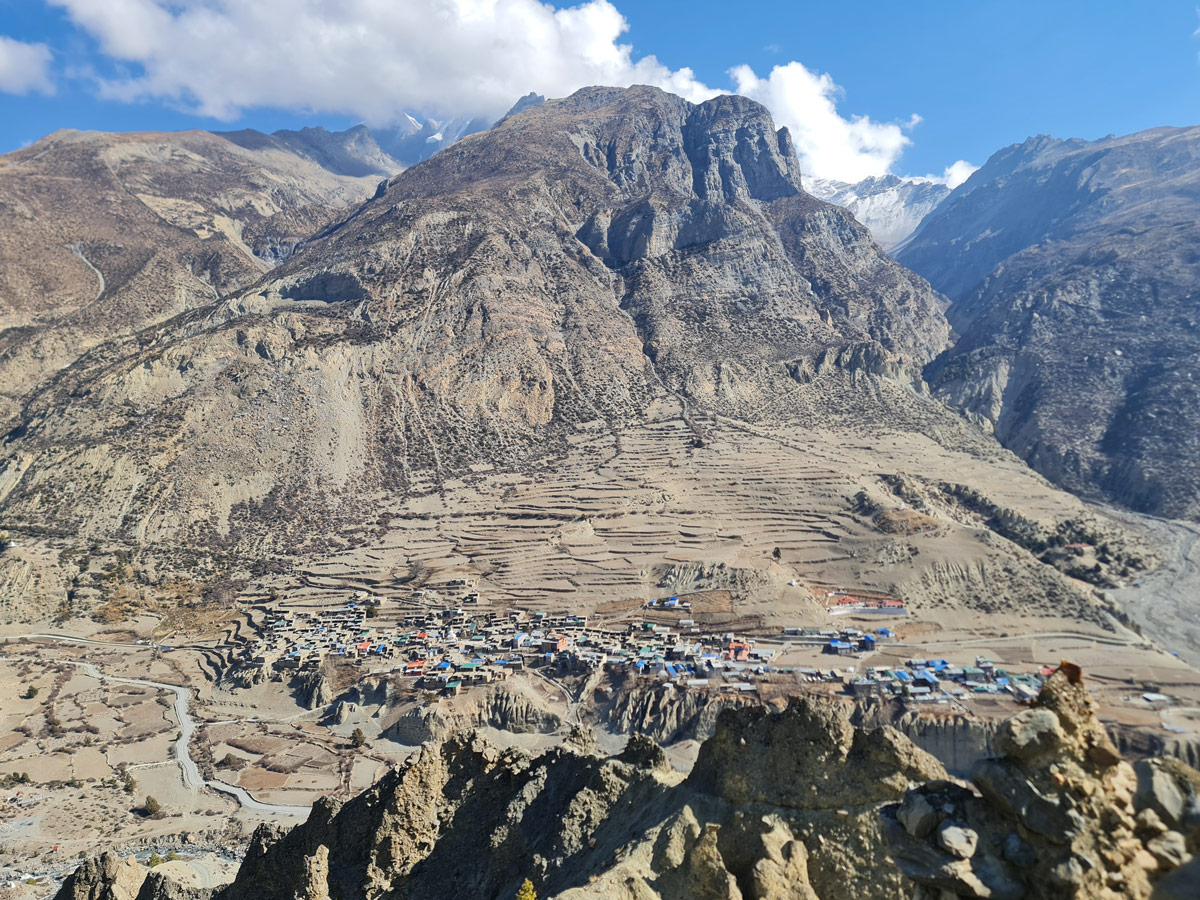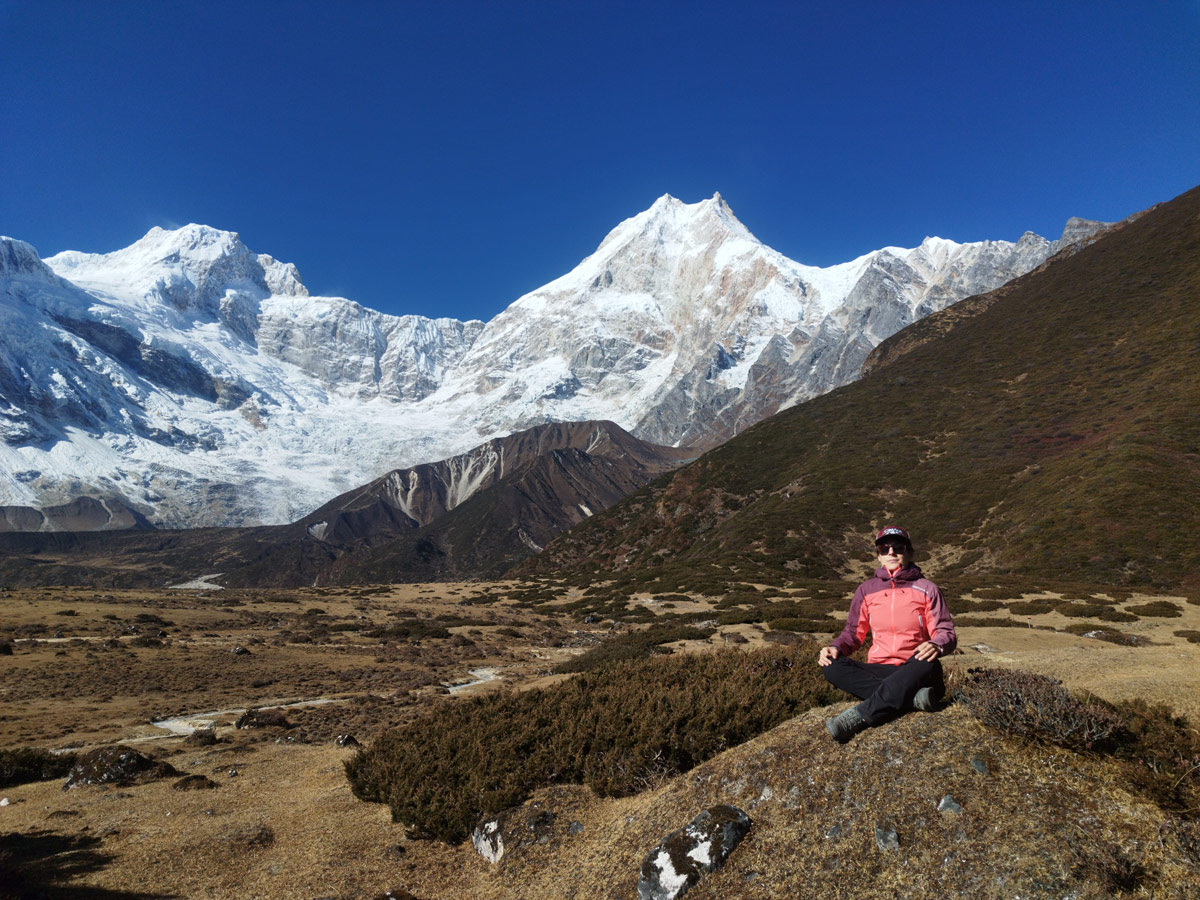Whether it be living beings or non-living objects, naming is essential in creating a distinct identity that resonates with people.Take for instance the towering Himalayan rocks, which have gained their own unique identity and carved a lasting impression in people’s minds as soon as they were discovered.
Isn’t it ironically fascinating how these majestic Himalayas, which symbolize stillness and serenity, were formed due to the powerful collision of two massive continental plates?
Setting aside the geological history, let me amuse you with the fascinating meanings behind the names of the 14 highest peaks in the world, each with its own unique and meaningful designation.
Everest (8848.86 m/29,031.7 ft)
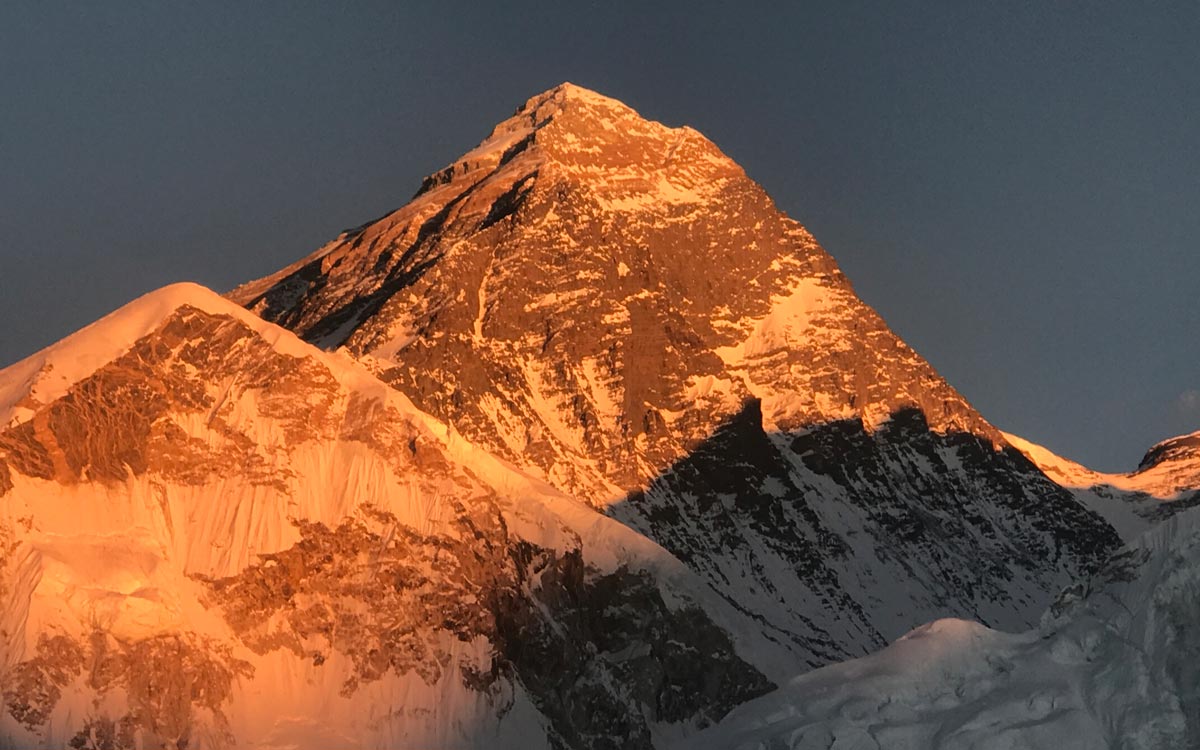
Everest, the tallest mountain on the earth, was given its name in honor of George Everest, a former Surveyor General of India. However, it is also known by other names, depending on the culture and language.
In Tibet, it is called “Chomolungma,” which translates “Goddess Mother of the World,” while in Nepal it is called “Sagarmatha,” which means “Goddess of the Sky.”
These names reflect the spiritual significance and reverence that the mountain holds in the beliefs and traditions of the people who live in the region.
K2 (8,611 m/28,251 ft)
K2, a mountain in the Karakoram Range, was first discovered in 1856 by Col. T.G. Montgomerie, who was the Surveyor of India and the first person to map the region.
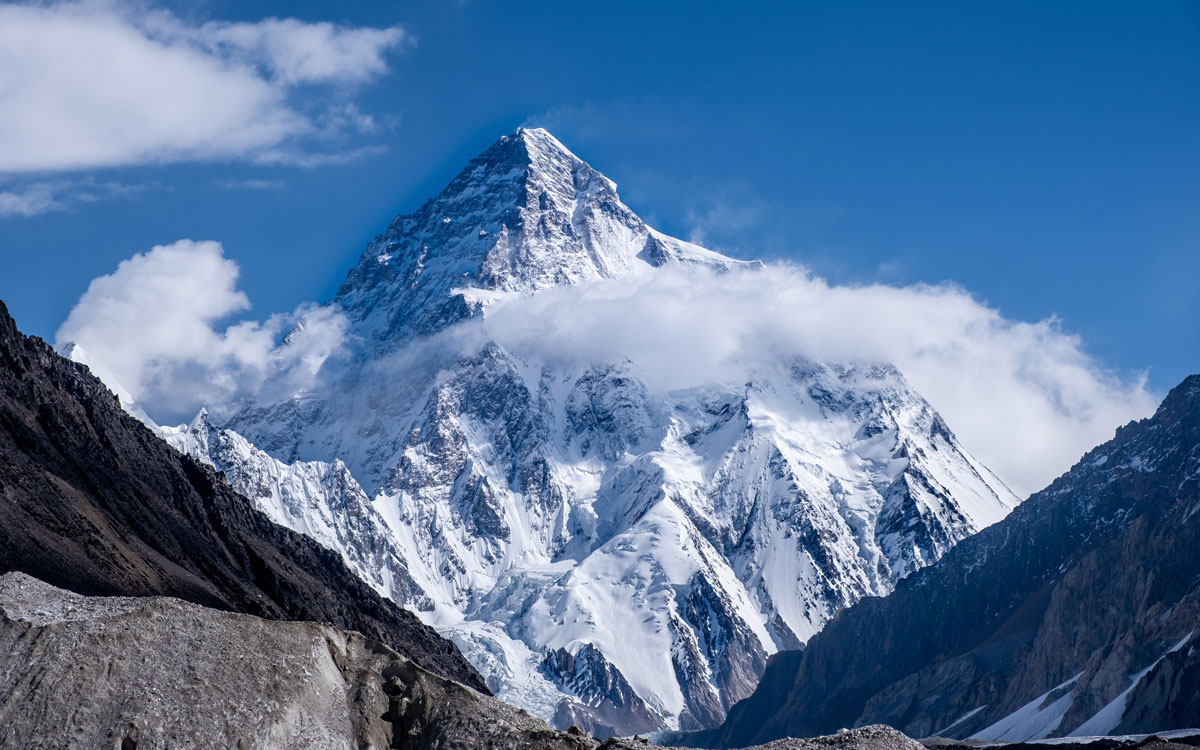
The mountain was given its name as a result of Montgomerie’s measurements, which indicated that it was the second-highest peak in the range.
The name “K2” reflects the origin of the mountain’s name: the “K” stands for the Karakoram Range, and the “2” indicates that it was the second peak measured by Montgomerie. This name has become widely recognized and is now commonly used to refer to this iconic mountain.
Kanchenjunga (8,586 m/28,169 ft)
Kanchenjunga is a massive mountain range that lies on the border between northeastern India and eastern Nepal, forming part of the Great Himalayan Range.
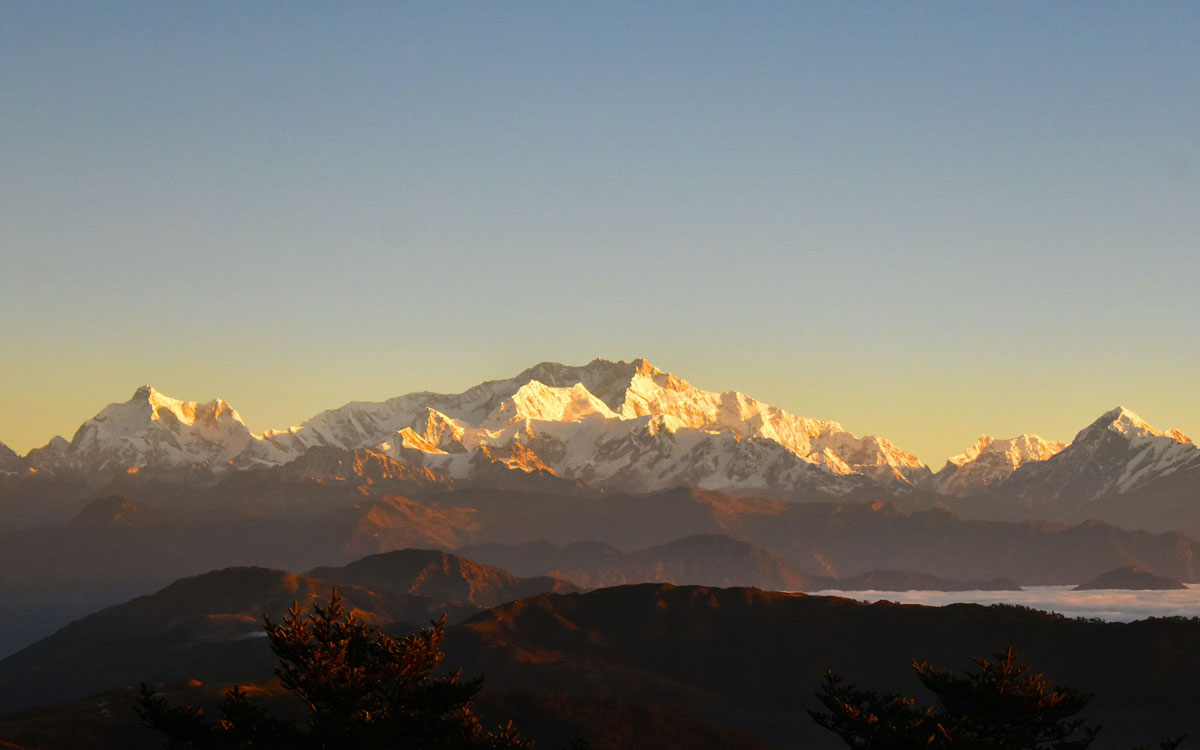
The name “Kang-chen-dzo-nga” or “Yang-chhen-dzo-nga”, is a Tibetan name which translates to “Five Treasuries of the Great Snow”, reflecting the immense size and majesty of the mountain.
Kanchenjunga extends in all four cardinal directions, making it a dominant presence in the landscape and an important cultural and spiritual symbol for the people who live in the region.
Lhotse (8,516 m/27,940 ft)
Lhotse, a mountain located near Mt. Everest, is situated on the border between Nepal and Tibet and is part of the Everest range, also known as the Everest Massif.
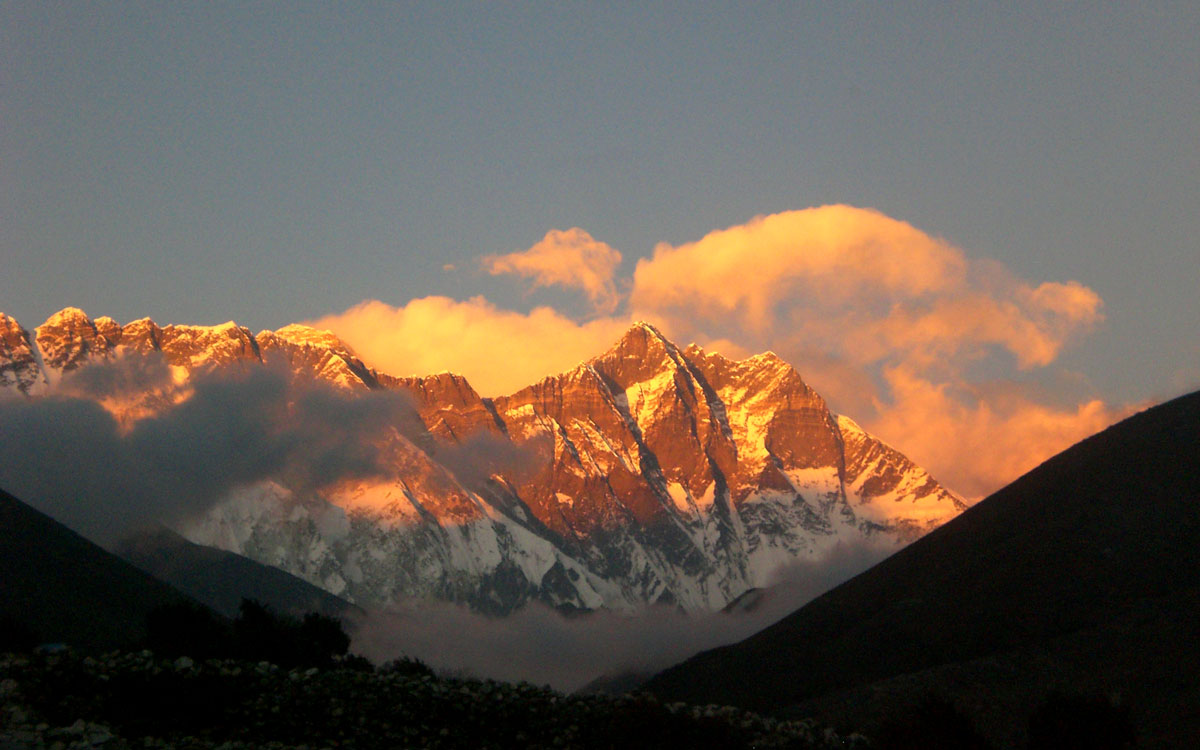
Lhotse is notable for having the largest south face of any mountain in the world, sharing its base camp with Everest. The name “Lhotse” comes from the Tibetan language, where “Lho” means “South” and “Se” means “Peak”.
Thus, the English translation of “Lhotse” is “South Peak”. This majestic mountain is an important landmark in the region and attracts mountaineers and adventurers from all over the world.
Makalu (8,481 m/27,825 ft)
Makalu, the fifth-tallest mountain in the world, standing apart from the other peaks and is located in the Mahalangur Himalayas, southeast of Mount Everest.
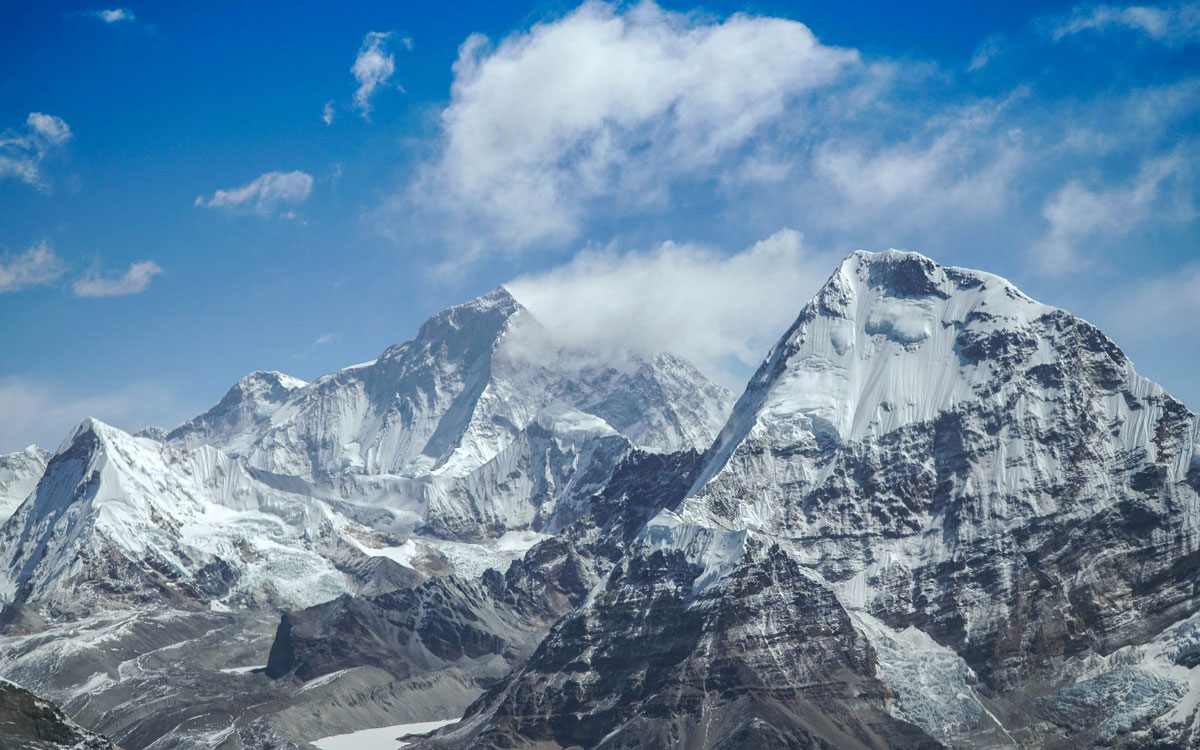
The name “Makalu” is derived from the Sanskrit language and means “Maha Kala”. The mountain has a unique four-sided pyramid shape that is both awe-inspiring and beautiful.
Despite being one of the tallest mountains in the world, Makalu has retained much of its natural, untouched beauty. As such, it is a popular destination for adventurous travelers who want to experience the majesty and grandeur of nature.
Cho Oyu (8,188 m/26,864 ft)
Cho Oyu, is known as the “Turquoise Goddess” in the Tibetan language. However, the mountain is also referred to by other names, including “Mighty Head”, “God’s Head”, and “Bald God”.
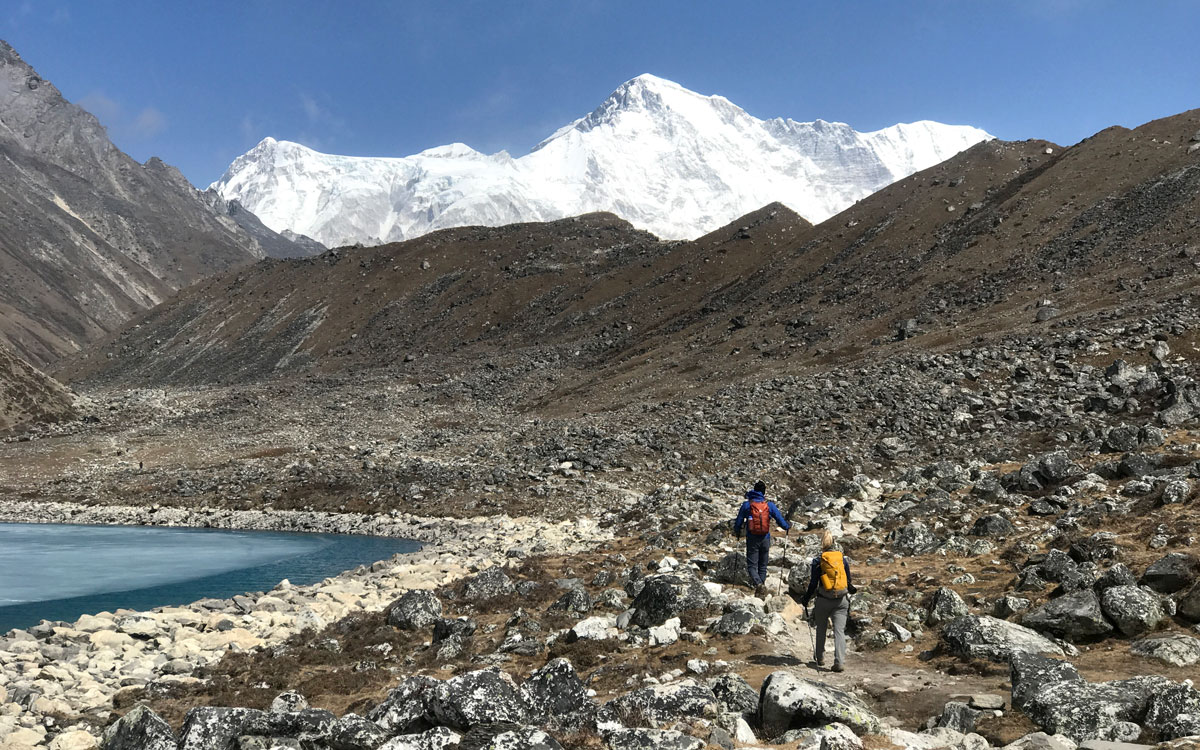
Many climbers consider Cho Oyu to be the easiest of all the mountains above 8,000 meters to climb. Despite this reputation, ascending Cho Oyu is still a significant challenge and requires a high level of skill and experience.
Dhaulagiri (8,167 m/26,795 ft)
Dhaulagiri I is the highest mountain in the Gandaki river basin, and its name comes from a combination of two Sanskrit words: “Dhawala”, which means “Dazzling”, and “Giri”, which means “Mountain”.
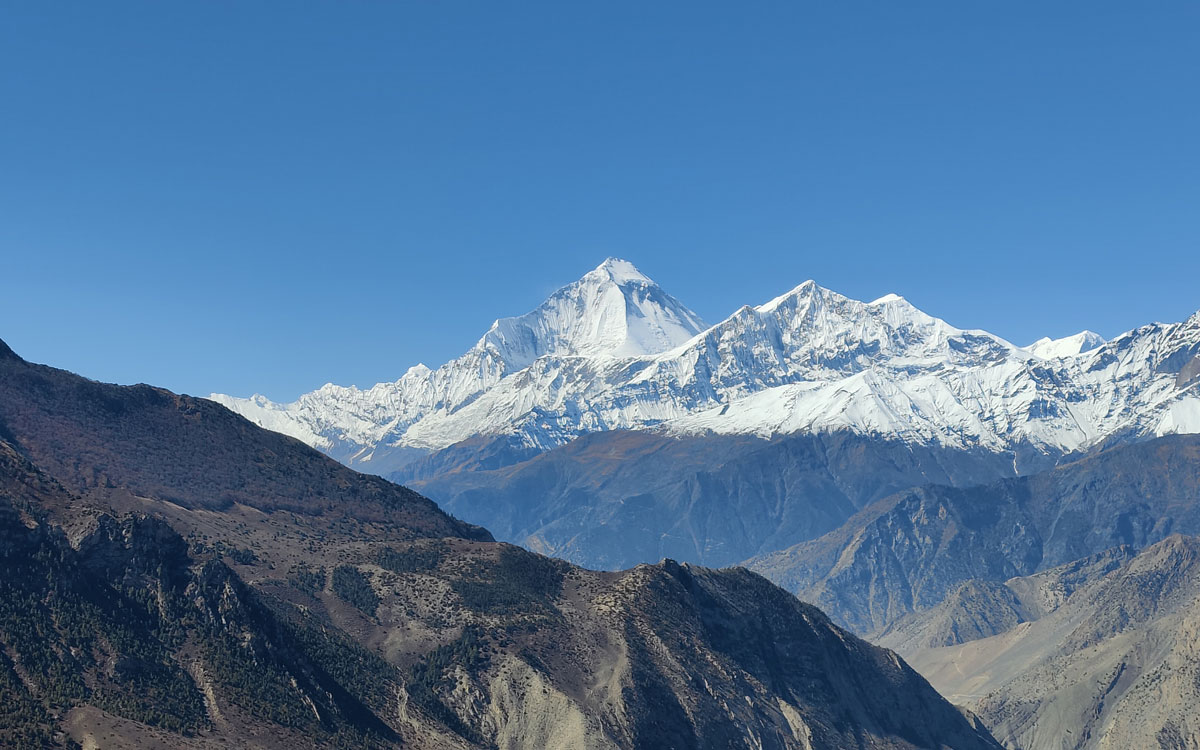
Dhaulagiri I lives up to its name, as it is a stunningly beautiful mountain that dazzles all who see it. Located in Nepal, the mountain is a popular destination for mountaineers and adventurers seeking to experience the majesty and grandeur of nature.
Manaslu (8,163 m/26,781 ft)
Manaslu is a mountain located in the west-central region of Nepal, and its name means “mountain of the spirit”.
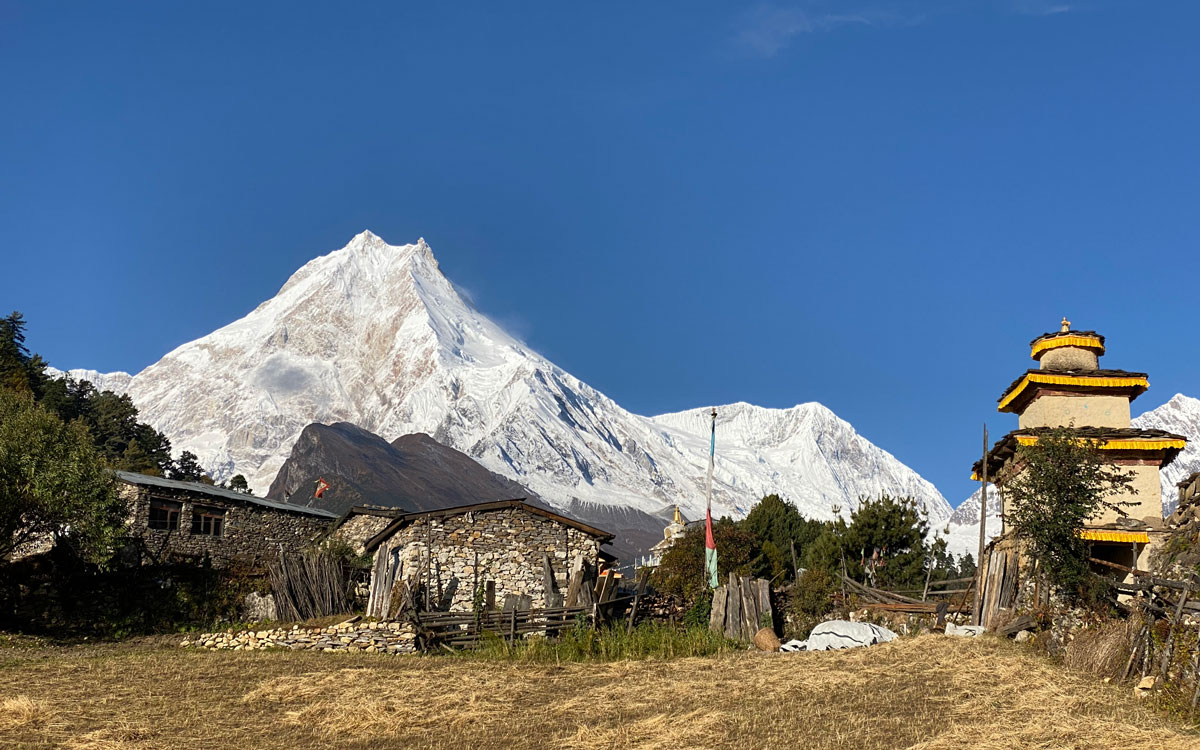
Mt. Manaslu from Lho villageThe name is derived from the Sanskrit word “Manasa”, which means “intellect” or “soul”. This name is fitting for the mountain, which is known for its stunning natural beauty and spiritual significance.
Nanga Parbat (8,126 m/26,660 ft)
Nanga Parbat, also known as Diamir, is a mountain located in the west-southwest region of Astor in Pakistan.
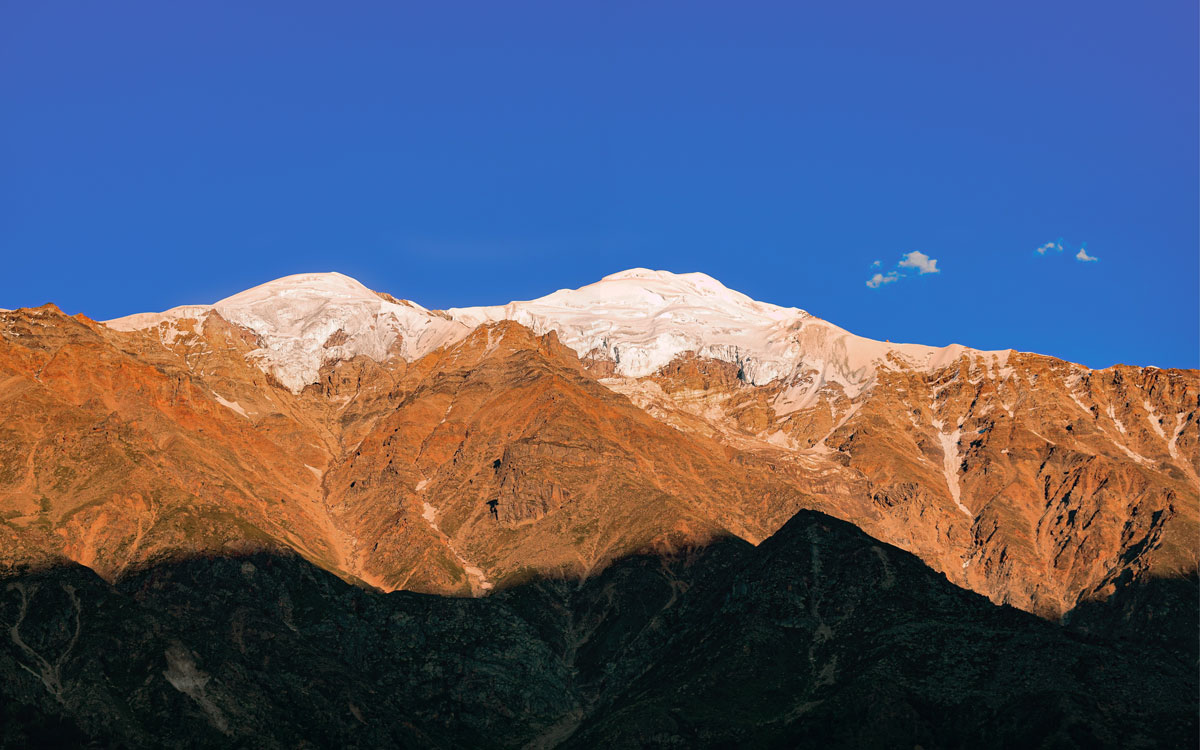
Its name, “Nanga Parbat”, means “the naked mountain”, while the local name “Diamir” means “kings of the mountains”. Nanga Parbat is considered one of the most challenging peaks in the world to climb, second only to K2.
Annapurna I (8,091 m/26,545 ft)
The name Annapurna has its roots in the Sanskrit language, where “Anna” means “food” and “purna” means “filled”.
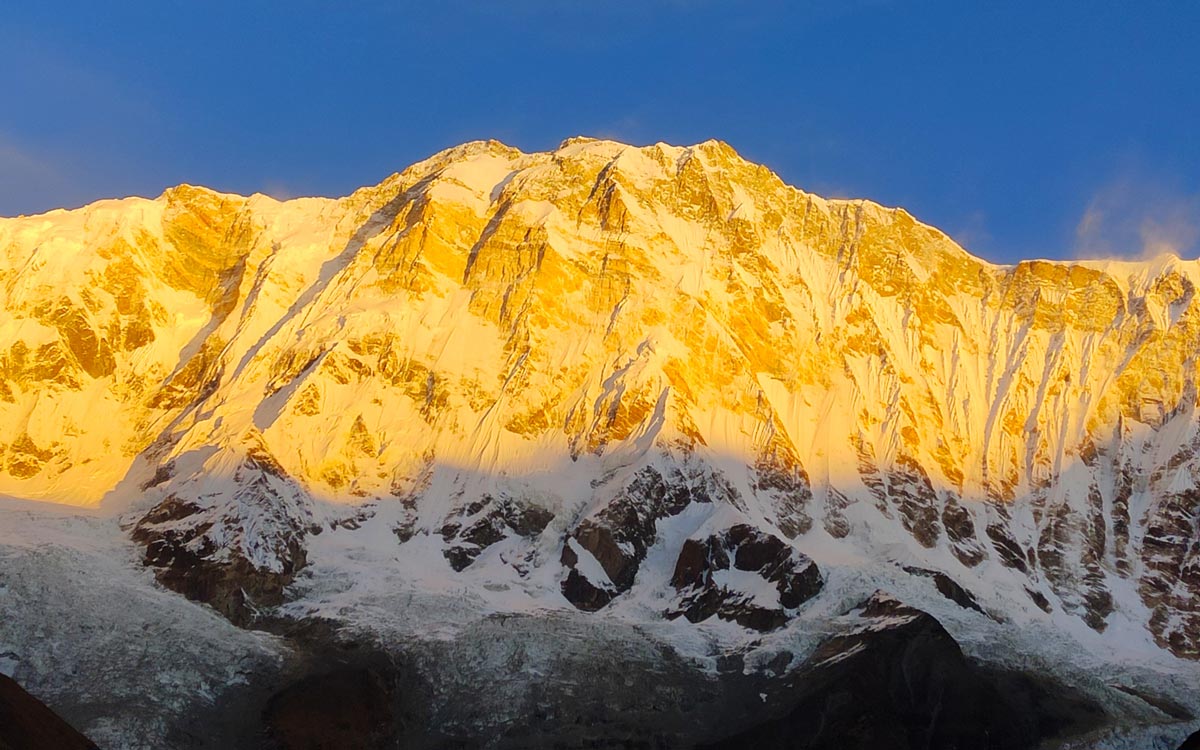
This mountain was named after the Hindu goddess of food and nourishment, who is revered as the source of all sustenance and life-giving energy. Annapurna is often translated as “everlasting food”, reflecting the mountain’s symbolic connection to the life-giving power of nature.
Gasherbrum I (8,080 m/26,510 ft)
Gasherbrum is a collection of four peaks located in the Karakoram Range of the Himalayas Mountains, situated in the northern region of Kashmir.
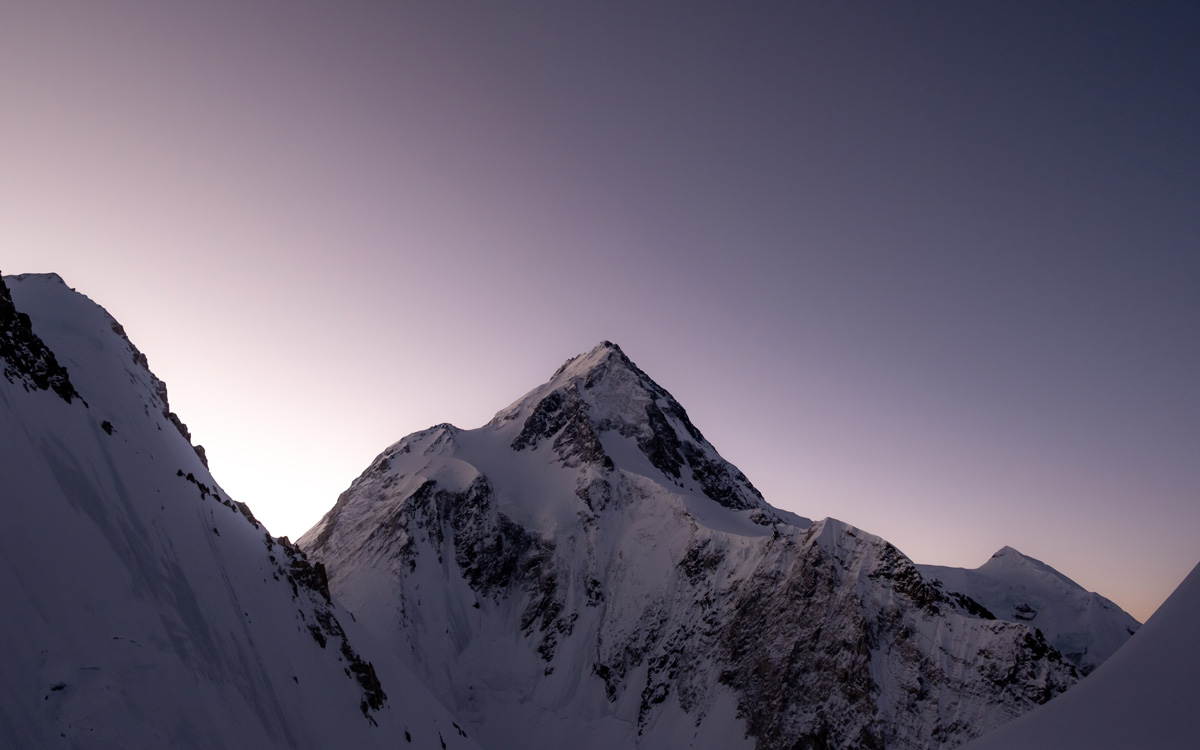
The name Gasherbrum has its roots in the local language, where “Gasher” means “shining” and “brum” means “wall”.
This majestic mountain range is known for its spectacular beauty and towering peaks, which have drawn adventurers and explorers from around the world for centuries.
Broad Peak (8,051 m/26,414 ft)
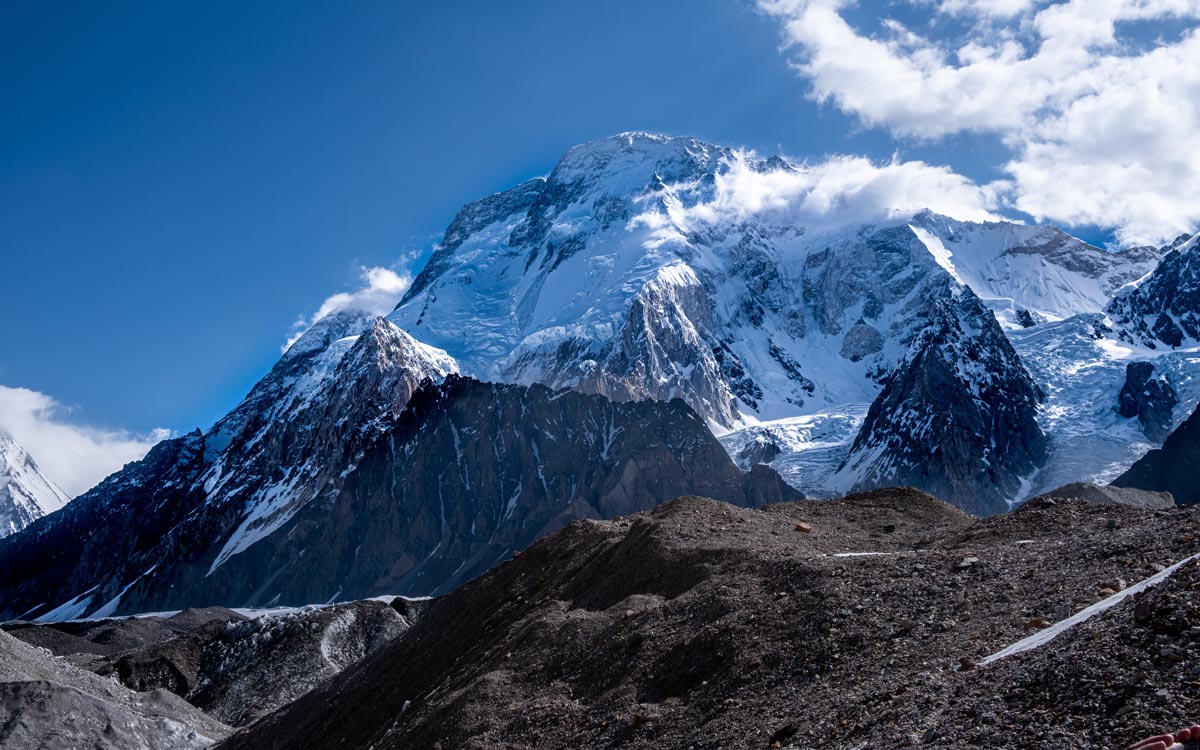
Located on the border of Pakistan and china, Board Peak literal translation is Falchan Kangri in the local language. The mountain was named Board Peak because of its broad, flat summit.
Gasherbrum II (8,035 m/26,362 ft)
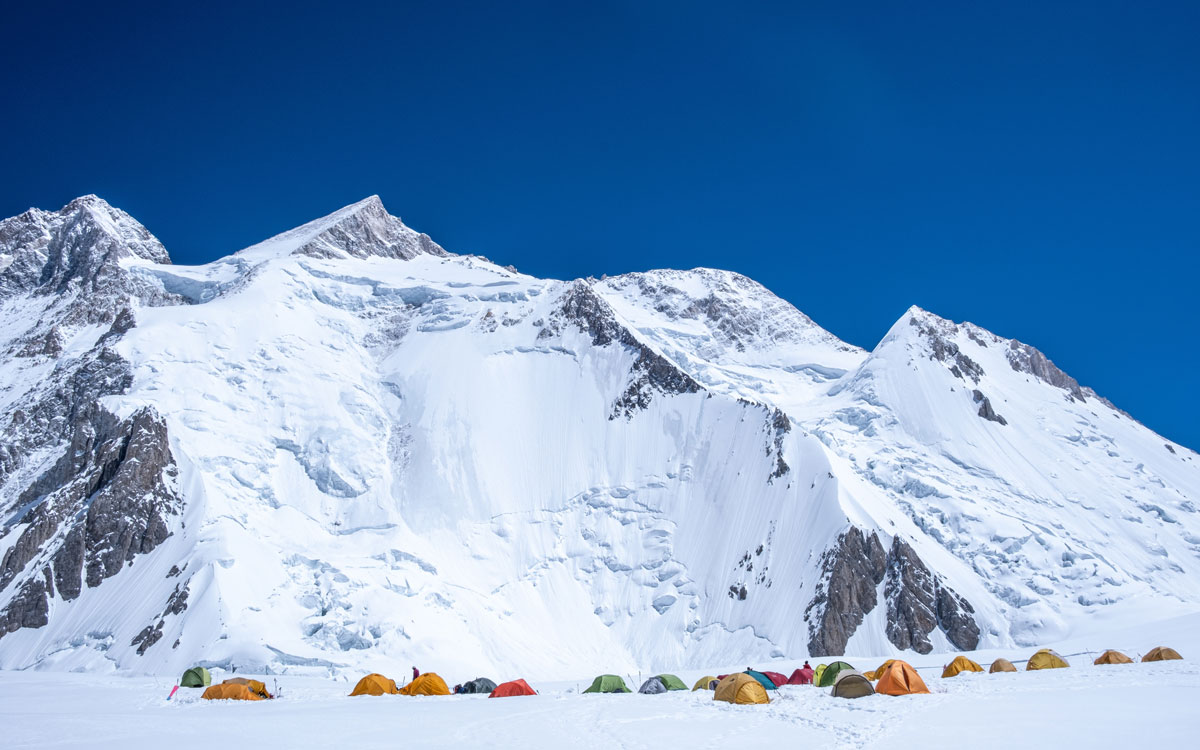
As mentioned earlier the name Gasherbrum has its roots in the local language, where “Gasher” means “shining” and “brum” means “wall”.
Shishapangma (8,027 m/26,335 ft)
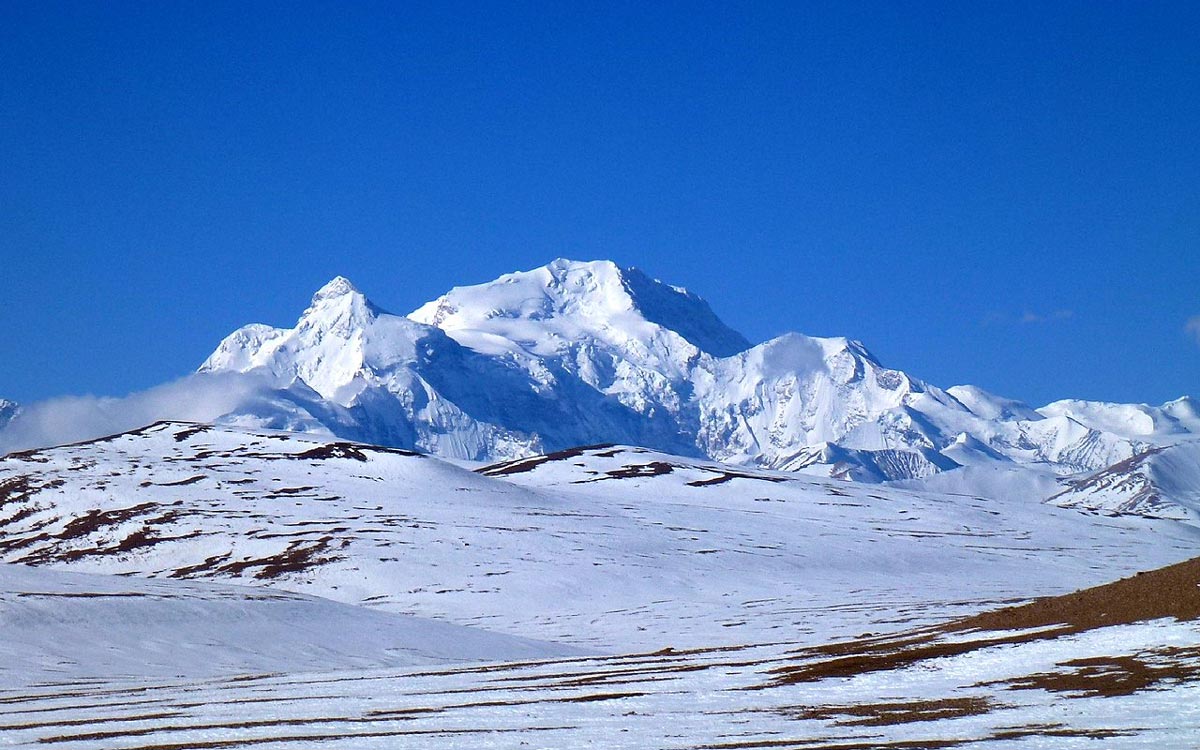
Shishapangma is a mountain located in Tibet whose name has Tibetan origins. In Tibetan, “Shisha” means “range,” and “Pangma” means “meadow.” Geologist Toni Hagen provided an alternative interpretation of the name, suggesting that it means “crest above the grassy plains” or “grassy plain.”
